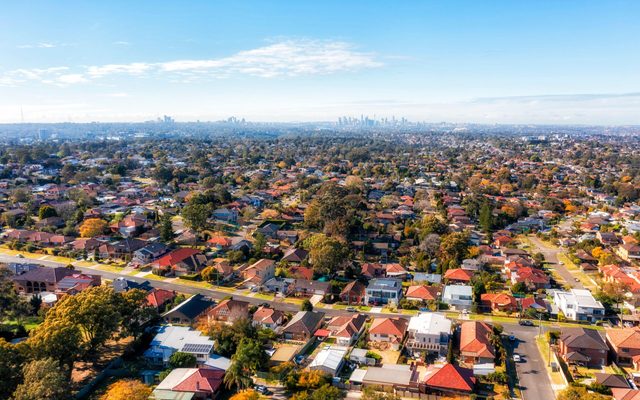This article is from the Australian Property Journal archive
ANZ has again revised its forecast for house price growth upwards, expecting an 8% rise in 2020 as the turnaround in Sydney and Melbourne outpaces expectations.
In its latest Australian Housing Update, ANZ economists Felicity Emmett and Adelaide Timbrell said increase has been supported by easier access to credit and lower interest rates, while a combination of pent-up demand and low volumes appear been a key driver of the larger-than-expected rebound. Ongoing buoyant auction clearance rates point to more solid gains.
“Nationwide, we expect prices to rise solidly in 2020, but we think the pace of monthly gains will moderate, helped by rising new listings.”
This appears to already be the case, with December prices slowing to 1.4% month on month from 1.9% in November, and daily house price data suggests the trend has continued into January.
Melbourne will lead growth in 2020 with 12% and Sydney is tipped for 10%, both 3% higher than the major lender’s previous forecast in October. The national revision for this is up to 8% from 6%, and a further 4% growth is pencilled in for 2021.
“The risks seem tilted to the upside, alongside the risks for further monetary easing,” the Emmett said.
Sydney and Melbourne prices have now risen 9% since the low in May. Melbourne and Brisbane prices are only just off their peak. Adelaide prices are picking up while Perth is stabilising after tumbling more than 20% since the peak in 2014.
Hobart prices strengthened, but the pace slowed.
Affordability concerns return
Emmett said first home buyer loan sizes and owner occupier mortgages are at historical highs, while rental payments have risen more than consumer prices and are squeezing the increasing share of low-middle income earners who are in the private rental market.
Low-middle income earners are less likely to be owner occupiers compared with 20 years ago, as housing is more expensive to buy and the segment is using more of its income to pay rent. Around 39% of capital city low-income households were in rental stress in 2007/08, which has jumped to around 48% ten years later.
Annual housing credit growth is at a historical low of 2.3% despite a boom in new mortgages, as households use rate cuts to pay down debt faster rather than reduce repayments.
Emmett said this is slowing household credit growth and helping to strengthen vulnerable household balance sheets.
First home buyer loan sizes are up 16% since the low in May. Mortgage arrears rates outside Western Australia have been increasing since the beginning of 2018, driven by the transition from interest only loans to principal and interest loans, which for some mortgages can increase payments by up to 40%.
Emmett said the transition is a result of tighter credit regulations which make it more difficult to roll over to new IO loans.
“The lower share of new IO loans means we are unlikely to see a large volume of expiries. We are about mid-way through the transition from a high volume of IO loans to a low volume.”
Light at the end of the tunnel for construction
Housing construction has been falling for more than a year, and while building approvals have dropped sharply through 2018 and 2019, the rate has stabilised. Still, work in the pipeline is shrinking and the drop in approvals suggests activity will fall until mid-year.
High-rise apartment approvals have been hardest hit and down close to 60% from the peak, compared to the modest 21% drop for houses.
Emmett said credit availability is a good leading indicator for residential construction activity.
“Construction is set to fall until mid-2020, before recovering; but the fall in approvals so far points to a housing shortfall.
“The lags between interest rate cuts and building approvals are lengthening as apartments (which take longer to approve and longer to build than detached houses) become more significant in the housing mix. Concerns about build quality may also delay or dampen the recovery.
“Lower rates and easier access to credit is slowly feeding through into an improved construction outlook and building approvals look set to turn around in the near term.”
The recent ANZ-Property Council of Australia survey showed developers’ confidence about the outlook is increasing, thanks to lower rates and easier access to credit. Emmett said finance for construction is picking up strongly from both households and developers.
“The fundamentals for housing remain positive. In particular, strong population growth in major cities is continuing to support construction of new housing and vacancy rates (outside of Sydney) remain low. In Sydney, where there has been a bigger increase in supply, vacancy rates are at a 15-year high,” Emmett said.




